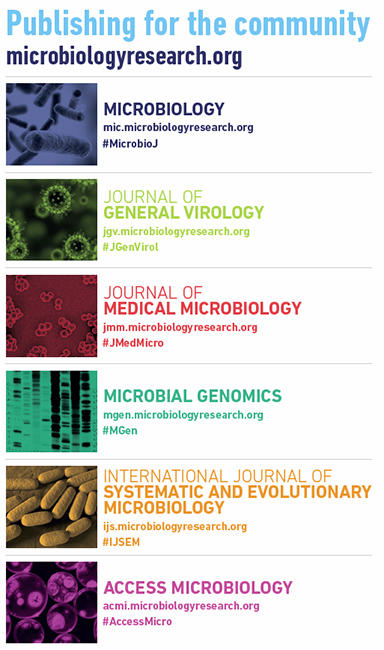Publishing is stressful enough… so why place financial burdens on authors?
Issue: Why Microbiology Matters
05 May 2020 article

For postdocs mapping out a future career as well as principal investigators (PIs) who support them, their grant applications and their university’s Research and Excellence Framework (REF) prospects, the publishing stakes have never been higher.
A successful research career rests on three simple accomplishments: 1. research, 2. publish your research, 3. apply and get more grant funding to continue to research…(rinse and repeat). Let’s look at each step in the cycle and find out why frontline researchers get so stressed.
Research by its very nature is for the curious. It may lead to unexpected – but useful, and sometimes fascinating – discoveries. It may lead to a particularly productive project with more collaborations and more publishing opportunities than had been expected originally. It may also run to the more prosaic, null or negative results. The point is the endgame is rarely predictable, and so the next step is not always obvious.
Publishing your research and getting your article into a journal with a high impact factor used to be the over-riding aim. This REF round, the first consideration is to publish Open Access (OA), and universities are being strongly discouraged from making hiring or tenure decisions based on the impact factor of the journal in an author’s bibliography. The argument runs that this proxy is no assurance of the actual quality or impact of a piece of work. Submission and peer review are not for the faint-hearted; the process for getting published is necessarily rigorous. Reviewers and Editors take their responsibilities seriously. If you make it through to acceptance, it is time to rejoice. However, unless you know for sure that OA funds are ring-fenced for you, the OA payment process can be a real worry.
Applying for grant funding is heavily based on track record; the more OA articles under a researcher’s belt, the better the chance of successful grant applications, and universities will find a postdoc more attractive leading into the next REF cycle, the more visible their work is. In effect, more OA articles are likely to attract more funding.
One of our members, Cardiff University postdoc Helen Brown, gave us a personal example of the situation:
“I have a side project that I have developed over the last few years. This is my way of showing independence and quality and I hope this work will be the basis for future fellowship/lectureship applications. I’ve had a couple of small grants to get the work going but when I applied for larger grants to progress the work, the feedback from the review panel was that I needed to show a track record in the area before I was fundable.”
Mind the gaps

OA publishing fees in the UK are often covered by block grants which are paid directly from UK Research and Innovation (UKRI) to universities, allowing for centralised administration and payment of OA fees covered by the research councils. This was devised as a way to remove the burden of paying for OA from researchers. However, block grants run out (at unpredictable times during the year) and if you miss out you need to tap into another pot of gold.
Grant funding that doesn’t stretch is a very common problem because research output (the number of articles) will not be known at grant application time. Often, researchers inherit the project and will have no control whatsoever over how much was calculated for publication costs. Examples of articles that commonly fall outside the grant remit are independent research, small seedcorn or summer/student projects and collaborations, outreach and pedagogy, and null and negative results. All this research adds value to our science, should be published and is rarely funded.
The simple three-step research cycle is easily disrupted and can lead to costly headaches. Removing this friction fed into the Society’s decision to address an increasingly burdensome problem that affects early careerists disproportionately; finding the funds to publish OA.
Open science initiatives such as OA publishing have been pursued by the Society as a strategic goal for many years, hence the establishment of two full OA journals, Microbial Genomics and Access Microbiology. Until now, the only business model to underwrite OA was to charge authors an article processing charge (APC). From the start of 2020, a new model called Publish and Read will help fund OA out of institutional funds, using the block grant system, but tapping into it upfront and so avoiding the pitfalls of the current pay-down system.
Helen Brown at Cardiff University:
“Publishing is stressful enough without the added demands of not knowing where the money to publish is going to come from. At least now (with Publish and Read) we have a way to help ECRs trying to get a foot in the door.”
Re-wiring subscription spend
The Society’s subscribing institutions are now offered the option to include publishing OA along with access rights to content within one annual fee. Designed to be administratively light, as simple for authors as it is for librarians, Publish and Read passes the responsibility for paying for research to be published from researchers to their employers; from an individual’s pocket to a centrally administered transaction pot that can be managed and monitored by an institution on behalf of their researchers.

Gaynor Redvers-Mutton
Head of Business Development and Sales
Are you eligible to publish OA fee-free? Check our journals platform to see if your library has signed up for Publish and Read.
Image: Dennis Kunkel Microscopy/Science Photo Library.


